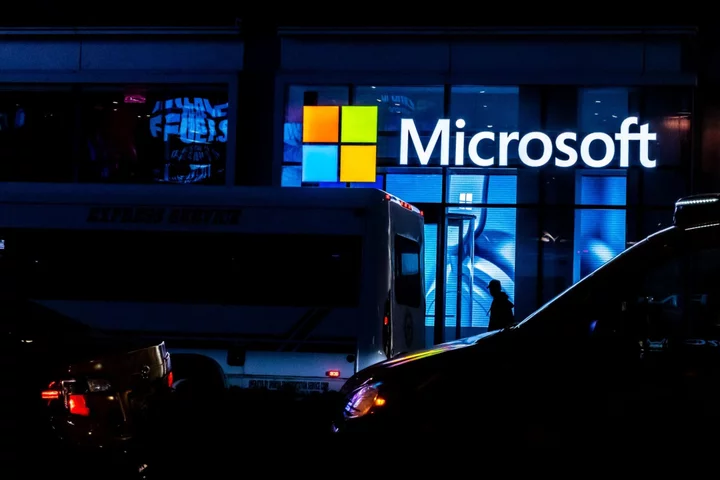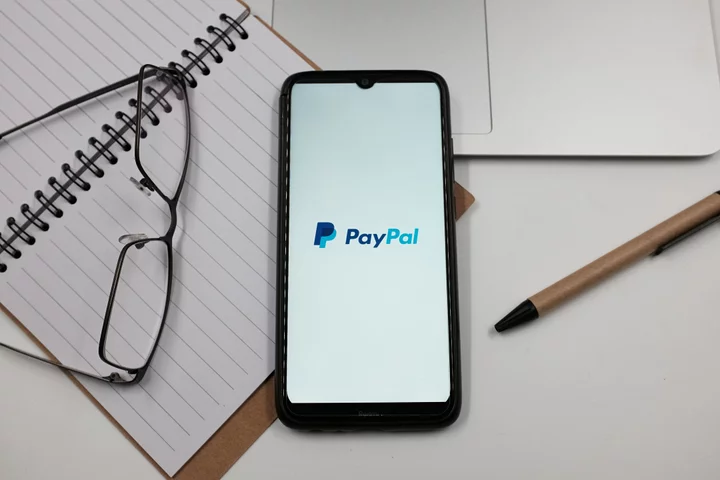Originally aimed at consumers searching for a Windows alternative to the Apple iPad, the Microsoft Surface Go is a diminutive tablet with a 10.5-inch screen that failed to impress when it debuted, but improved considerably with a revision in 2020.
The fourth generation of the Surface Go, unveiled at Microsoft’s fall Surface launch event Thursday, was buried a bit in the announcements that were dominated by AI integrations and Copilot. Still, Microsoft remains committed to serving the niche that is entry-level, compact Windows tablets, one that other OEMs have failed to service consistently. The typical use case for these tablets was originally people surfing the web on their couches and doing basic Windows tasks. But over the generations, Microsoft has seen that market morph into IT departments deploying fleets of these tiny tablets for specialized front-of-house or point-of-sale tasks; schools adopting them for little hands and touch input; and businesses using them as flexible, pass-around devices used by multiple people at different times.
We spent some time with the new Go 4 tablet at the event, now dubbed the Surface Go 4 for Business, and found that while it is definitely a niche product, a few under-the-hood improvements over the consumer-focused Surface Go 3 make it worth a look for interested institutional buyers. (Microsoft notes that the Surface Go 3 will continue on and co-exist with the Go 4 for Business.) Here are our first impressions.
The Surface Go 4 Loadout
The Surface Go 4, which starts at a palatable $579.99, is essentially a little brother to the larger, more powerful, and more expensive Surface Pro 9 Windows tablet. The device can be used by itself, with no accessories, as a tablet whose main interface is its touch screen. The screen itself isn’t remarkable, but it’s no low-rent budget panel. It's reasonably high-res for its size, featuring a 1,920-by-1,280-pixel native resolution with a rated maximum of 350 nits of brightness and a 1,500:1 contrast ratio. (Microsoft maintained that screen quality from the Surface Go 3 into the Go 4 for Business.)
(Credit: John Burek)On the edges of the device, you’ll find many more ports and controls than the iPad offers. They include a USB-C 3.1 port for data, DisplayPort, and charging; a microSDXC card reader; a 3.5mm headphone jack; a Surface Connect port; and a Surface Type Cover connector along the bottom edge.
That last port is the link to one of the Surface lineup’s key strengths as a laptop/tablet hybrid. The Surface Type Cover (a $99 extra in basic black, $129 in fuzzy fabric) adds a keyboard with a touchpad that makes typing for longer sessions on the Surface Go 4 at least tolerable. A clamshell laptop like the Surface Laptop Go is definitely a cut above in terms of key feedback and typing experience, but the Go 4 accessory keyboard is the essence of the standard Surface Pro detachable keyboard: comfy chiclet keys with the slight incline enabled by the magnetic connection at the lower end of the screen. The fabric version is the one we tried onsite. Typing on the Surface Go remains workable on a flat tabletop but is still, ahem, a no-Go on your lap. (The rear kickstand, typical of the detachable Pro and Go, hasn’t changed, with its thin lower edge.)
(Credit: John Burek)We also tried the Surface Pen, which clamps magnetically to the left edge of the tablet portion. It’s the typical Surface Pen experience, and a pricey add-on. A Microsoft rep onsite clued us in to the fact that Microsoft also offers a “classroom” edition of the Surface Pen, which has much the same functionality in its lower half and eliminates the upper half’s eraser and other functions in an effort to create a more affordable pen. It’s still an active stylus, and it costs $20 less, which may have appeal for education institutions that want to equip classrooms with these in bulk.
(Credit: John Burek)The Go 4 Innards' Alphabet Soup: NFC, UFS, N200
Since the Surface Go 4 is now aimed more at businesses and schools than consumers, the main improvements are under the hood, ones you can’t see from looking at the tablet, but that might affect the experience for corporate users, educational admins, and IT departments in positive ways. They include a new Intel N200 four-core low-power processor, which Microsoft says is at least two times faster than the Pentium processor in the base model of the Surface Go 3. We’ll have to benchmark that; loading the Device Manager window to check out the processor specs in Windows was decidedly more sluggish to launch than when we did the same on the Surface Laptop Go 3 a moment later. (That device used an Intel Core i5 U-series chip.)
(Credit: John Burek)You also might notice the upgraded internal storage, which now uses UFS technology instead of the slower eMMC of previous versions. Used mainly in phones, UFS is slower than the solid-state storage (SSD) technology typically used in laptop and desktop PCs, but is still an upgrade.
(Credit: John Burek)Also new under the Surface Go 4’s surface is an NFC sensor, positioned inside the chassis rear at one corner...
(Credit: John Burek)The NFC function can make user access control easier for organizations with especially sensitive data security needs. It also allows logging into specific Microsoft 365 environments–useful for education or healthcare–taking you to a personalized sandboxed instance of Microsoft 365, serving up your own settings and customization right from bootup. That’s great if you have, say, one or more shared Surface Go 4 tablets in a medical, small-business, school, or retail environment, and it is shared among multiple students, workers, or users on shifts. Login will get them to their own environment at a tap.
The final key internal improvement is a bump in the base memory amount to 8GB, which is really table stakes these days even for a budget tablet. It’s a definite improvement from the $399 Surface Go 3 base model, which has just just 4GB of memory and a 64GB eMMC drive.
The Go 4 for Business will be primarily sold direct to education markets and commercial customers, though you’ll be able to get onesies and twosies from Microsoft directly, too.
(Credit: John Burek)While these are all positive improvements, we’ll have to wait until we get a Surface Go 4 for Business unit in PC Labs to test it out, since some of the professed high points were not easily untangled in the few minutes we spent with the device at the event. (The performance of the Intel N200, for one thing, is a bit of a mystery to us at the moment.) Check back soon for our full review of the Go 4 for Business as soon as we can get a sample in our mitts for a proper PC Labs workout.









